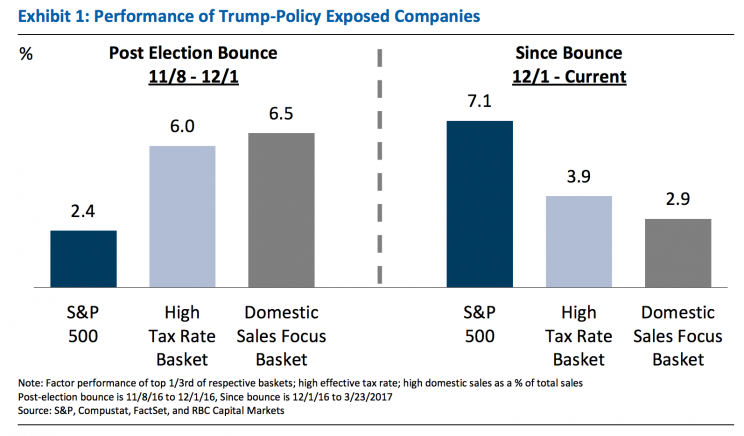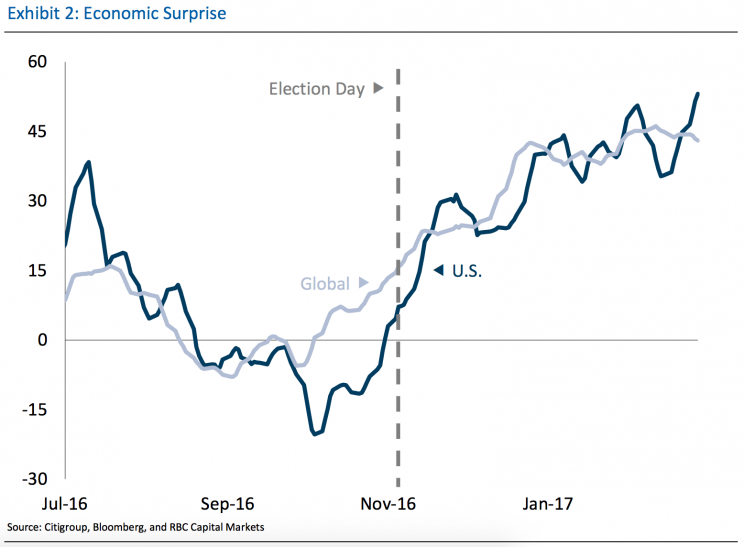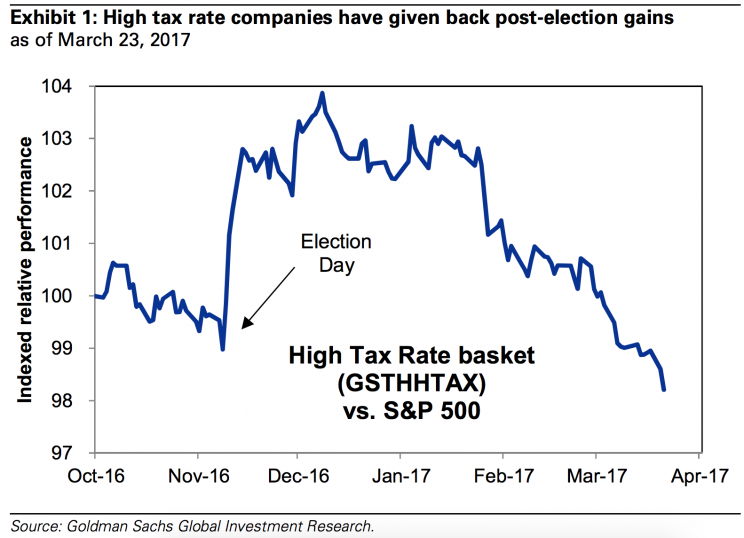Dow closes lower for 8th straight day, longest losing streak since 2011
Stocks closed lower on Monday after a volatile trading session.
The Dow closed down 45 points or 0.2%. The S&P 500 closed down 2 points or 0.1%. Meanwhile, the Nasdaq was up 11 points or 0.2%.
After Republicans failed on their first major legislative initiative on Friday, markets around the world sold off on Monday as questions about the “Trump rally” were dogging investors to start the week.
Shortly after the open in New York, the Dow dropped as many as 184 points, while the S&P 500 was off 21 points, and the tech-heavy Nasdaq was off 59 points. Each of the major indexes was down at least 0.8% at their lows.
Monday’s decline in the Dow represented the index’s 8th straight losing day, NYSE floor governor Rich Barry noted.
“It does not seem too long ago that the Dow set an almost unprecedented 10-straight day winning streak,” Barry said.

Crude oil prices, the U.S. dollar, and U.S. Treasury yields were among measure that were in the red. The 10-year Treasury yield fell to as low as 2.34%. Just a few weeks ago the 10-year had touched 2.6%.
Last week, each of the major averages declined with much of the damage coming on Tuesday, when stocks had their worst day of the year. The losers then — as on Monday morning — were mainly financial stocks which had been the best performing sector since the election. In early action on Monday, the XLF ETF which tracks the financial sector was off more than 2%.

Is this all about Trump?
Some strategists, however, have also been casting doubt on whether the rally we’ve seen since the election has been all about hope related pro-growth policies out of the Trump administration or if stocks are also reacting to a positive earnings and growth story.
In a note to clients out Monday, Jonathan Golub at RBC Capital Markets, said that, “It appears the market did fall in love with the President’s pro-growth policies immediately following the election, with more domestically-oriented companies and those with above average tax rates meaningfully outperforming. However, the market quickly lost interest in these names following the initial love affair.
“This is not meant to diminish the potential upside from Trump’s policies. Rather, it is intended to highlight the sturdiness of the current rally and the likely upside if hoped-for legislation is implemented in a constructive manner.”

Among other factors boosting markets outside of an explicit “Trump trade,” according to Golub, include positive economic surprises, improving global manufacturing surveys, rising inflation expectations, and an increasing quits rate in the US.

John Stoltzfus, chief investment strategist at Oppenheimer, added in a note out on Monday that, “For all the ruckus surrounding the activity in Washington last week, it looks to us that so far investors are pretty much undeterred in their relatively positive outlook for the US economy and the markets even as politicos in and around Capitol Hill and Pennsylvania Avenue draw lines in the proverbial sand.
Adding that, “For all the noise that came from market bears and skeptics last week as markets gave back some gains from the start of the year, the Dow Industrials, the S&P 500, the S&P 400 (mid caps) the Russell 2000 (the broadest index of US small caps) and the NASDAQ Composite (in large part technology driven) last week respectively shed 1.52%, 1.44%, 2.12%, 2.65% and 1.22%.
“That’s not exactly a ‘rout’ in our book considering that those same indices are up respectively in the past 12 months through last Friday: 17.68%, 15.09%, 19.99% 25.93% and 22.22%. It would appear to us that the markets stateside have enough ‘cushion’ from the past 12 months to afford some profit-taking and time to pause and ponder if needed without disengaging from the bull market mode.” (Emphasis ours).
Stoltzfus has a year-end price target on the S&P 500 of 2,450; the benchmark index was trading near 2,320 early Monday.
Hopes for tax reform diminished
As for the fate of one of the most popular Trump-related trades — and one about which there is no doubt Trump’s election win was the beginning, middle, and end of the thesis — David Kostin, chief U.S. equity strategist at Goldman Sachs, notes that tax reform hopes have almost entirely disappeared.
“The boost to S&P 500 earnings from a lower corporate tax rate is likely to be smaller and to occur later than investors originally expected,” Kostin writes.
“The House Republican blueprint proposes a reduction in the statutory federal corporate tax rate to 20% from the current 35%. We estimate that a 5% reduction in the effective tax rate would boost ROE by 100 bp and lift S&P 500 EPS by about 6%. However, our Washington, D.C. economist expects the tax rate will be cut less than proposed to roughly 25%. Investors have also reduced expectations for the timing and size of tax reform. After outperforming the S&P 500 by 5.2% post-election, our basket of stocks with the highest effective tax rates has given back all of its post-election gains in the last three months.” (Emphasis ours.)

—
Myles Udland is a writer at Yahoo Finance. Follow him on Twitter @MylesUdland
Read more from Myles here:
